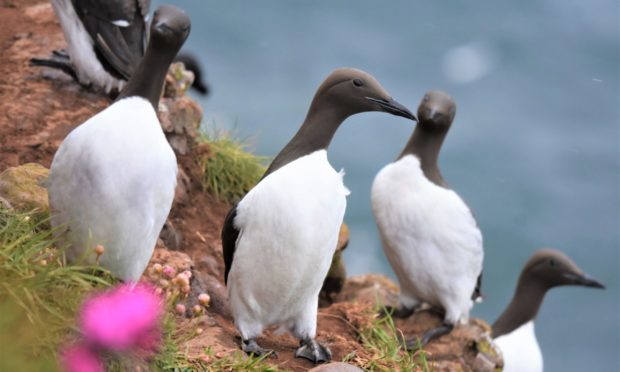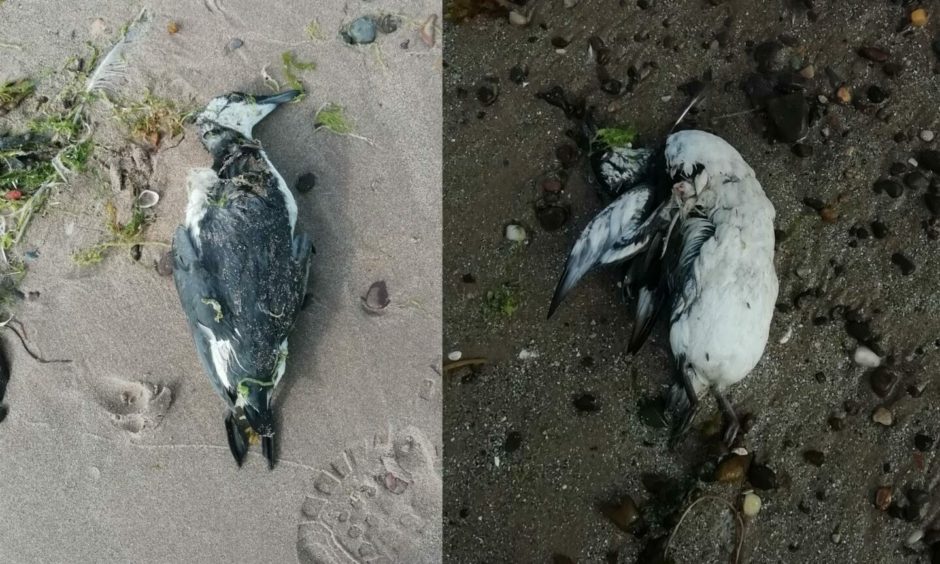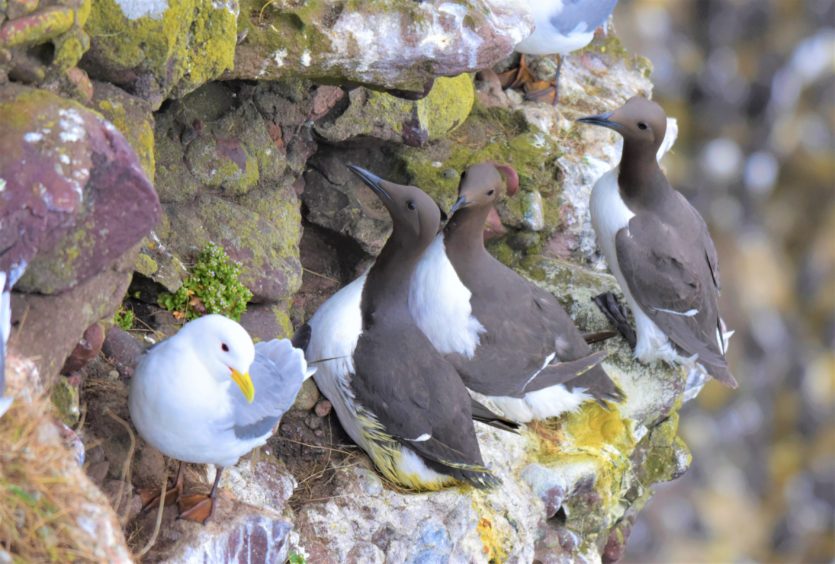Something didn’t seem right, and I couldn’t quite put my finger on it.
I was on an early morning visit to Peterhead harbour and the inner basin was full of guillemots, their black and white forms bobbing out on the water.
I had never seen so many guillemots in the harbour before and their occurrence in such numbers seemed strange, especially since there had been no recent storms, which might have been one reason for these auks to seek shelter within the protective embrace of the port.
Then, I noticed something even more worrying – the bodies of several dead guillemots floating in the water. What on earth was going on?
I wasn’t sure, but perhaps these birds were starving and had sought the harbour as a calm place where to seek out fish.
Two days later, I was down on the foreshore at Elie in Fife, where I found more dead guillemots on the strandline – these engaging little seabirds were experiencing calamitous turmoil that was causing mass mortality.
This is a phenomenon that has been noted up and down the North Sea coast this autumn, with hundreds of dead guillemots having been recorded.
The issue is currently being investigated by the UK Centre for Ecology and Hydrology (CEH), who have found the birds to be emaciated.
The guillemots are certainly behaving strangely, and some birds have even been spotted up rivers, which is most unusual.
CEH has ruled out bird flu but is investigating other possible causes, which include a lack of suitable fish in the sea for the guillemots to feed upon or poisoning by toxins from marine algal blooms, which is affecting their behaviour.
Whatever the cause, the phenomenon does illustrate the fragility of our marine ecosystem and the dangers presented by pollution and climate change.
New book
In my new book, A Scottish Wildlife Odyssey, which will be published by Tippermuir Books later this year, I highlight the plight of Shetland’s kittiwakes, which are experiencing tumultuous population decline.
Keith Broomfield: Life on the edge amid the seabird drama of the Isle of Noss at Shetland
I write: “The underlying problem is related to our warming seas, which has led to planktonic ecosystem shifts resulting in a decline in the abundance and size of sandeels.
Kittiwakes are especially vulnerable to food shortages as they can only take prey such as sandeels, sprats and juvenile herring when they occur at or near the surface of the sea, unlike deeper diving species such as gannets.”
A few years ago, I attended a science conference in Aberdeen, which explored the marine impacts caused by climate change.
The evidence from the speakers, all of them experts in their field, was compelling; our warming seas are having a real and discernible impact on the distribution of many marine species.
With the COP26 conference to discuss global action on climate change due to convene in Glasgow soon, it is more imperative than ever that it delivers a strategic plan for addressing this ticking timebomb that is already beginning to wreak havoc upon our precious marine life.
INFO
Guillemots are cliff nesting birds, with several important colonies on the Scottish east coast, including Fowlsheugh, the Bullers of Buchan and Troup Head.
Guillemot in winter plumage, if choosing other photos, make sure it is species (Uria aalge) and not the black guillemot.












